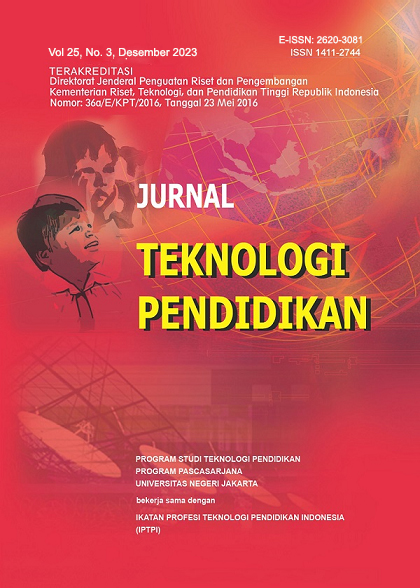Quality Assurance in the Open University Service Online Learning Tutorial
DOI:
https://doi.org/10.21009/jtp.v25i3.45724Keywords:
Open University, Quality Assurance, Ethics, Online LearningAbstract
Higher Education Quality Assurance as disseminated to tertiary institutions in Indonesia until 2007. This dissemination aims to make every university realize that the responsibility for the quality of higher education implementation in these tertiary institutions is no longer entirely in the hands of the Government, but especially in the hands of the universities themselves. . Apart from that, the dissemination also aims to inspire each university about what, why, who, where, when, and how to carry out quality assurance in higher education.
References
Dzimińska, M., Fijałkowska, J., & Sułkowski, Ł. (2018). Trust-Based Quality Culture Conceptual Model for Higher Education Institutions. Sustainability, 10(8), Article 8. https://doi.org/10.3390/su10082599
Elliot, D. L., & Brna, P. (2009). ‘I cannot study far from home’: Non‐traditional learners’ participation in degree education. Journal of Further and Higher Education, 33(2), 105–117. https://doi.org/10.1080/03098770902856645
Galama, T., & Hosek, J. R. (2008). U.S. Competitiveness in Science and Technology. Rand Corporation.
Hoppers, W. (2000). Nonformal Education, Distance Education and the Restructuring of Schooling: Challenges for a New Basic Education Policy. International Review of Education, 46(1), 5–30. https://doi.org/10.1023/A:1003910005160
Komalasari, K., Arafat, Y., & Mulyadi, M. (2020). Principal’s Management Competencies in Improving the Quality of Education. Journal of Social Work and Science Education, 1(2), Article 2. https://doi.org/10.52690/jswse.v1i2.47
Meili, R., & Shearmur, R. (2019). Diverse diversities—Open innovation in small towns and rural areas. Growth and Change, 50(2), 492–514. https://doi.org/10.1111/grow.12291
Orser, B., Riding, A., & Stanley, J. (2012). Perceived career challenges and response strategies of women in the advanced technology sector. Entrepreneurship & Regional Development, 24(1–2), 73–93. https://doi.org/10.1080/08985626.2012.637355
Panigrahi, R., Srivastava, P. R., & Sharma, D. (2018). Online learning: Adoption, continuance, and learning outcome—A review of literature. International Journal of Information Management, 43, 1–14. https://doi.org/10.1016/j.ijinfomgt.2018.05.005
Sarker, M. F. H., Mahmud, R. A., Islam, M. S., & Islam, M. K. (2019). Use of e-learning at higher educational institutions in Bangladesh: Opportunities and challenges. Journal of Applied Research in Higher Education, 11(2), 210–223. https://doi.org/10.1108/JARHE-06-2018-0099
Seyfried, M., & Pohlenz, P. (2019). Assessing quality assurance in higher education: Quality managers’ perceptions of effectiveness. In Impact Evaluation of Quality Management in Higher Education. Routledge.
Super, D. E. (1980). A life-span, life-space approach to career development. Journal of Vocational Behavior, 16(3), 282–298. https://doi.org/10.1016/0001-8791(80)90056-1
Vlachopoulos, D., & Makri, A. (2019). Online communication and interaction in distance higher education: A framework study of good practice. International Review of Education, 65(4), 605–632. https://doi.org/10.1007/s11159-019-09792-3
Downloads
Published
How to Cite
Issue
Section
License
Jurnal Teknologi Pendidikan is an Open Access Journal. The authors who publish the manuscript in Jurnal Teknologi Pendidikan agree to the following terms.
Attribution-ShareAlike 4.0 International (CC BY-SA 4.0)
-
Attribution — You must give appropriate credit, provide a link to the license, and indicate if changes were made. You may do so in any reasonable manner, but not in any way that suggests the licensor endorses you or your use.
-
ShareAlike — If you remix, transform, or build upon the material, you must distribute your contributions under the same license as the original.
- No additional restrictions — You may not apply legal terms or technological measures that legally restrict others from doing anything the license permits.
Notices:
- You do not have to comply with the license for elements of the material in the public domain or where your use is permitted by an applicable exception or limitation.
- No warranties are given. The license may not give you all of the permissions necessary for your intended use. For example, other rights such as publicity, privacy, or moral rights may limit how you use the material.








